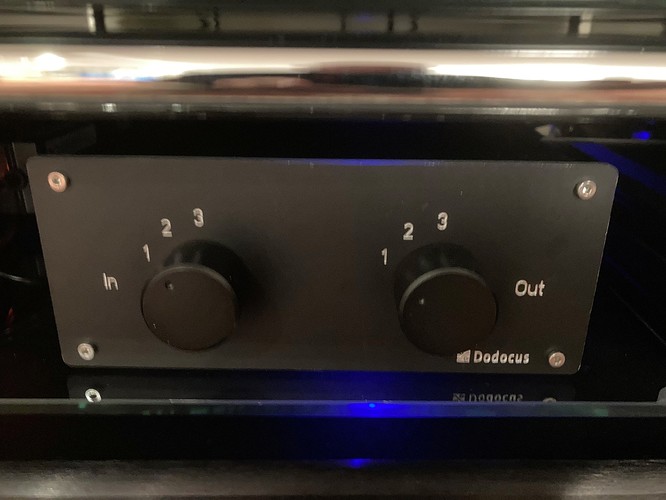I am using a 3in x 3out XLR switch to connect all my gear.
In go the Rossini, a Neukomm CDA126S DAC and an empty connection for my testbed.
Out it goes to my Neukomm PA18 monoblocks and two headphone amps (Highamp Sirius for STAX, Bryston BHA1).
The switch was custom built by Dodocus Audio-Umschalter. The switch is completely passive using high quality switching elements. The blue LED does not come from the switch.
Dodocus are very flexible and custom build switching equipment. They can also do remote controllable, relays based etc.
Now if all the DSP processing in the Bartok is done digitally it would seem easy to implement the same thing across the product range, as the Bartok has essentially the same board as Rossini.
I would vastly prefer to keep the headphone amp separately. Otherwise STAX and Co will not be able to use the feature.
@Andrew maybe something for Rossini 3.0?
